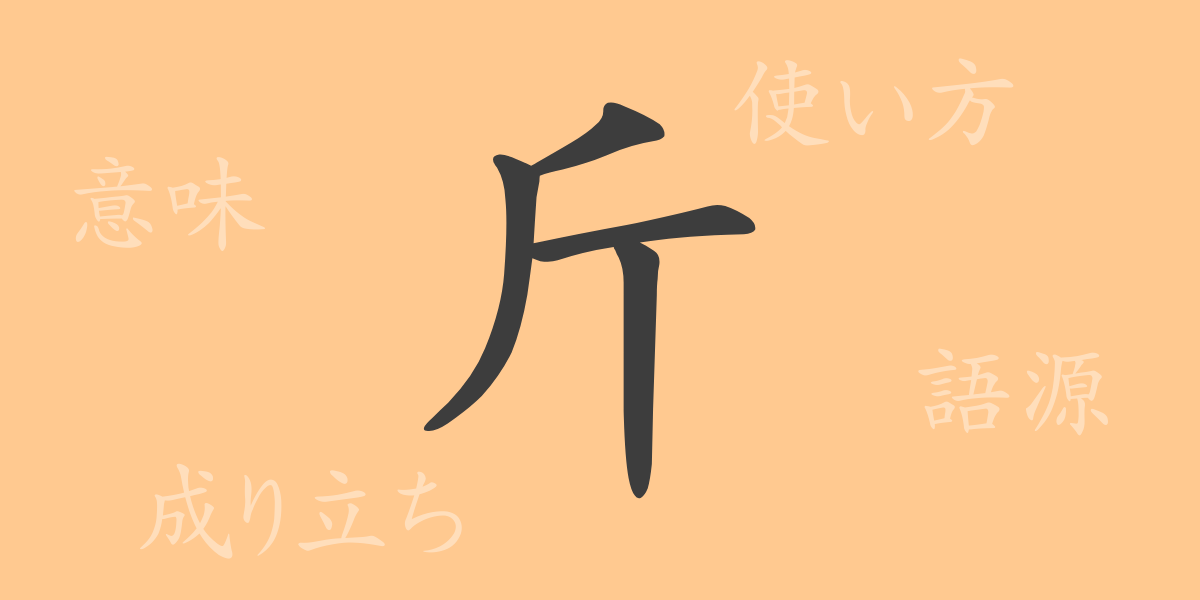The beauty of the Japanese language lies in its complexity and depth. Kanji, one of the core elements of this language, each have their own unique history and meaning. This time, we spotlight the less commonly seen kanji “斤(きん)” and explore its charm and usage.
Origins of 斤(きん)
The kanji “斤(きん)” has been used in ancient China to mean “axe.” It is a pictogram that mimics the shape of an axe. This shape conjures the action and weight associated with wielding an axe, and over time, it also came to be used as a unit of weight.
Meaning and Usage of 斤(きん)
In modern Japanese, “斤(きん)” is primarily known as a unit of weight. It is often used to indicate the weight of bread, as in “一斤(いっきん).” While it can also be seen in words related to axes, this usage is not common.
Readings, Stroke Count, and Radical of 斤(きん)
The kanji “斤(きん)” has interesting characteristics in its readings and structure:
- Readings: The on’yomi (Chinese reading) is “キン,” and the kun’yomi (Japanese reading) is “おの.”
- Stroke count: “斤(きん)” has 4 strokes.
- Radical: The radical for this kanji is 斤部(きんぶ) or 斧(おの).
Idioms, Expressions, and Proverbs Using 斤(きん)
While “斤(きん)” is not commonly found in modern Japanese idioms or expressions, a few examples can be mentioned:
- 「斤量(きんりょう)」: Weighing the weight of something, or the weight itself.
- 「斤計(きんけい)」: Measuring weight, or the measurement itself.
These terms are mostly seen in historical texts and contexts rather than in contemporary usage.
Conclusion on 斤(きん)
The kanji “斤(きん),” despite its infrequent use, is a fascinating character that reflects the rich history and culture of the Japanese language. It has been used in various contexts over the ages, both as a unit of weight and as a symbol for the tool axe. Through this exploration, we hope you have gained a deeper understanding of the meaning and background of “斤(きん).” It serves as a small yet significant piece in the vast tapestry of the Japanese language.

























